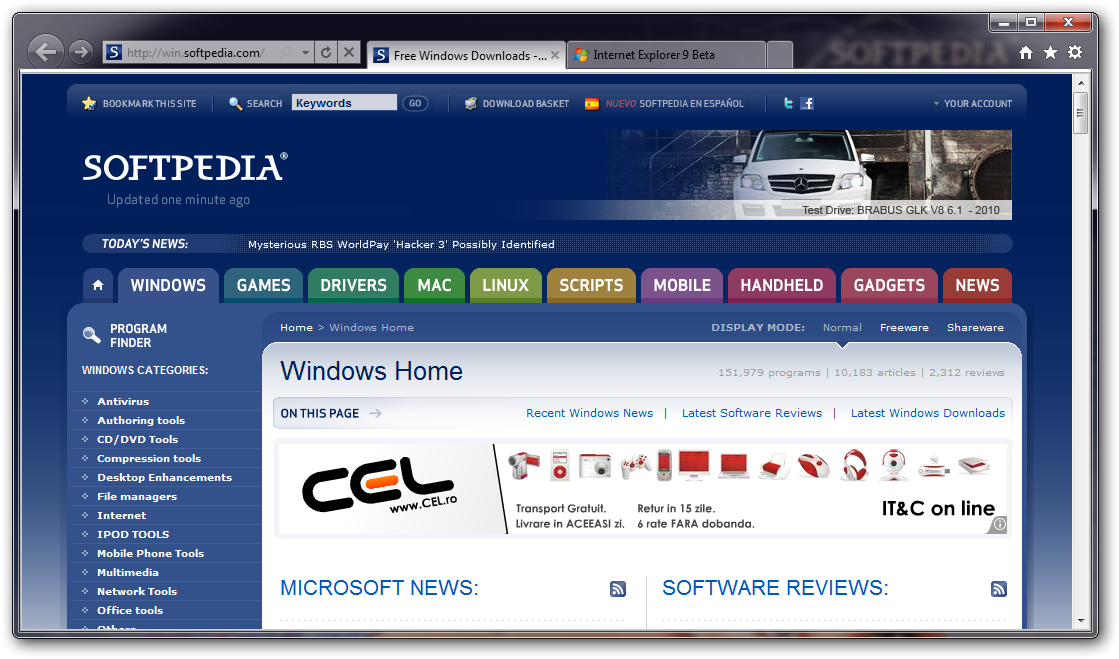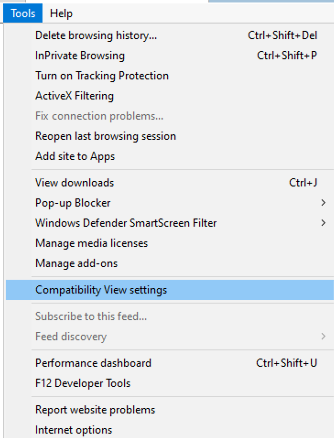

Since compatibility view in Internet Explorer is more or less hit-and-miss, it is better for the Web Developer/Administrator to control page rendering themselves. In reality, as noted in this post, compatibility view in Internet Explorer “is different under some circumstances to the actual old version, one does not precisely emulate the other, and I’ve seen some bugs which appear to belong to compatibility mode alone.” (From. “In Compatibility View, websites will be displayed as if you were viewing them in a previous version of Internet Explorer…” This last statement (#2) begs the question, “So what version does Internet Explorer use when Compatibility View is turned on?” If you check Internet Explorer’s Tools menu > Compatibility view settings, you’ll see a checkbox that says, “Display all intranet sites in Compatibility View.” If your website is in the Intranet (as many SharePoint sites are), the compatibility view that Internet Explorer is setting will override your rendering directives in the master page and elsewhere, unless you add an emulate tag. According to Microsoft, Intranet sites display in compatibility mode by default. Both site collections with the problem were in the Intranet.If you examine this master, all you will see is a plain old “head” tag followed by the meta tag generator, Microsoft SharePoint. The actual master is called pickerdialog.master, and it lives in the 14 folder, inside the Templates > Layouts subfolder. The People Picker does not use v4.master or whatever other master you set as the Site Master Page or the System Master Page.Well actually the out-of-the-box master already has this tag, and in every custom master page I examined, the page author had copied this tag. Since the problem is SharePoint, and I know that SharePoint always uses a master page – either the one out-of-the-box, v4.master, or a custom master – than all I need to do is add the compatibility tag, right? To fix browser incompatibility problems, I found a number of people on forums and blog posts recommending the use of the “X-UA-Compatible” declaration inside a meta tag placed inside the head. Obviously, then, the source of the problem lay in some sort of compatibility issue between SharePoint and Internet Explorer 9 and/or Internet Explorer 10. These ended up disappearing when users changed the browser mode from IE9/IE10 to IE8 in F12 developer tools. At .ToXmlQualifiedName(String value, Boolean decodeName) at .XmlSerializationReaderDictionaryEntryArray.Read1_Object(Boolean isNullable, Boolean checkType) at .XmlSerializationReaderDictionaryEntryArray.Read2_DictionaryEntry(Boolean checkType) at .XmlSerializationReaderDictioaryEntryArray.Read3_ArrayOfDictionaryEntry()Īdditionally, a number of weird, unexplainable problems were occurring.


System.InvalidOperationException: Namespace prefix ‘xsd’ is not defined.

On two entirely separate farms, SharePoint 2010 was generating a correlation error when someone attempted to select a user from the People Picker: Recently I’ve encountered multiple issues at different client sites that all led back to SharePoint / Internet Explorer compatibility problems.


 0 kommentar(er)
0 kommentar(er)
